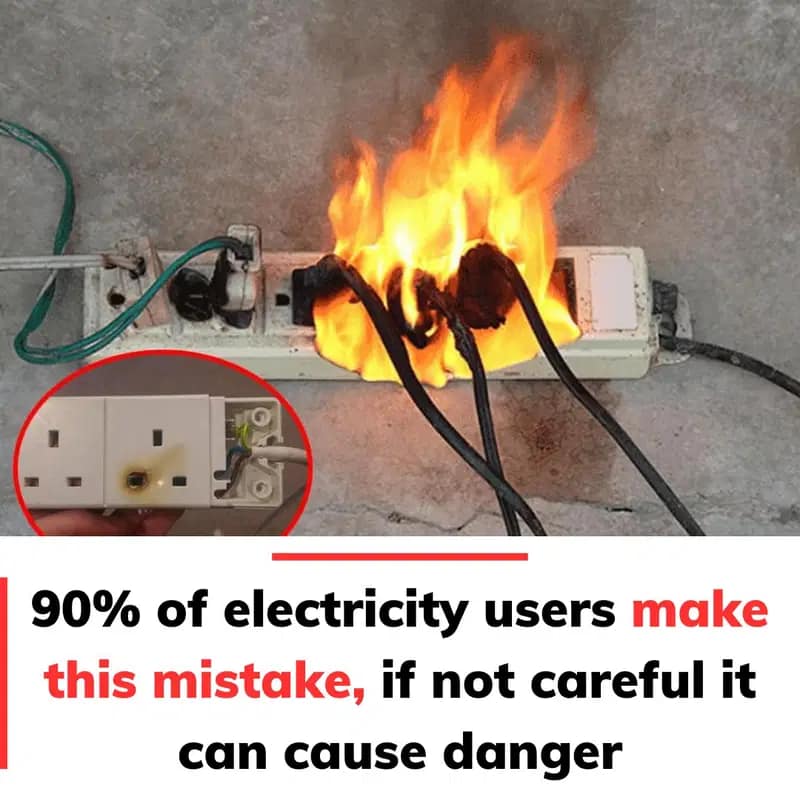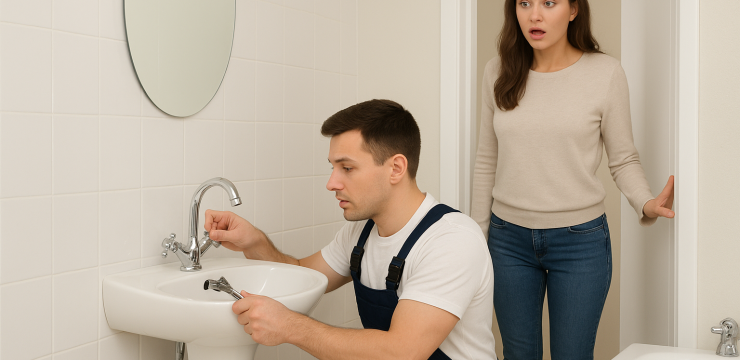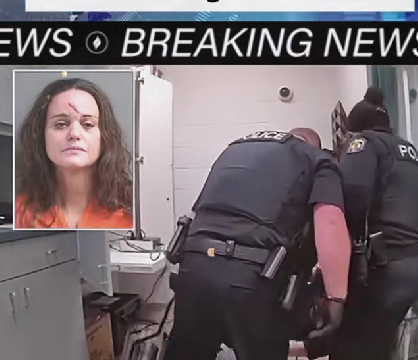In today’s world, electricity is an essential part of our daily lives, powering everything from household appliances to mobile devices. It’s nearly impossible to imagine life without it. However, despite how reliant we are on electricity, most homes are not equipped with enough wall sockets to meet modern needs. This shortfall has made extension cords a common solution, allowing us to expand the capacity of our electrical systems by turning one outlet into multiple sockets. While extension cords are incredibly convenient, they also pose significant safety risks when used incorrectly. Alarmingly, 90% of electricity users make common mistakes with extension cords that can result in electrical malfunctions, damage to appliances, or even house fires. Let’s dive into the most common mistakes and learn how to avoid them.

1. Plugging One Extension Cord Into Another
One of the most frequent mistakes people make is chaining multiple extension cords together. This usually happens when an extension cord isn’t long enough or when additional outlets are needed. However, daisy-chaining extension cords is a serious safety hazard. When extension cords are connected in this manner, the risk of overloading the circuits increases significantly. Overloaded circuits can cause outlets to overheat, melt the plastic insulation, or even catch fire. This isn’t just a theoretical concern—it happens in real-life scenarios and has been the cause of many household fires. The golden rule is simple: never plug one extension cord into another. If you need a longer reach, invest in a single, appropriately rated heavy-duty extension cord instead.
2. Using Indoor Extension Cords Outdoors
Extension cords are not universally designed for all environments. Many people assume any extension cord can be used outdoors, but this isn’t the case. Indoor extension cords lack the durability and weather resistance necessary for outdoor conditions. Exposure to moisture, rain, or temperature fluctuations can damage the insulation and expose live wires, leading to short circuits, electrical shocks, or even fires. Outdoor extension cords are specifically designed to handle harsh weather and have protective insulation. If you need an extension cord for outdoor purposes, make sure it is clearly labeled as weatherproof or water-resistant.
3. Overloading the Extension Socket
Every extension cord and socket has a maximum load capacity, which refers to the total wattage it can safely handle. Unfortunately, many people ignore this specification and plug in multiple high-power appliances at once. Devices like space heaters, microwaves, and refrigerators consume large amounts of electricity, and plugging them all into one extension cord can easily exceed its capacity. Overloading causes the socket to heat up, which may result in melting plastic, damaged circuits, or fire hazards. To prevent this, calculate the total wattage of all devices connected to the extension cord and ensure it stays within the rated capacity. Alternatively, choose an extension socket with individual switches for each outlet, as this provides an extra layer of control and safety.
4. Covering Extension Cords with Rugs or Other Items
Another dangerous mistake is covering extension cords with rugs, furniture, or other objects. While it might seem convenient to hide cords for aesthetic purposes, doing so prevents proper heat dissipation. Electricity flowing through a cord generates heat, and if that heat has no way to escape, the cord can overheat and become a fire hazard. Additionally, walking over a hidden cord can damage the insulation, expose wires, and create a risk of electrical shock. To minimize these dangers, always keep extension cords uncovered and in well-ventilated spaces. If you need to run cords across a floor, use protective cord covers specifically designed for that purpose.
5. Plugging Beauty Tools into Extension Sockets
Beauty tools such as hair dryers, curling irons, and flat irons are high-amperage devices designed to generate significant amounts of heat. These appliances draw far more power than most extension cords are designed to handle. Plugging them into a regular extension socket can overload the circuit, trip breakers, or even cause sparks and fires. Instead, these tools should always be plugged directly into a wall outlet, preferably one with a ground fault circuit interrupter (GFCI). GFCI outlets are designed to cut off power in case of electrical faults, significantly reducing the risk of accidents.
How to Use Extension Cords Safely
To avoid these common mistakes, follow these simple guidelines:
- Always use extension cords rated for the intended purpose (indoor or outdoor).
- Check the wattage capacity of the extension cord and ensure it matches the appliances being used.
- Never plug one extension cord into another.
- Avoid covering cords with rugs, furniture, or other materials.
- Keep cords away from areas with high foot traffic to prevent damage.
- Regularly inspect cords for frays, cracks, or exposed wires and replace damaged cords immediately.
- Avoid using extension cords as permanent wiring solutions.
Final Thoughts
Extension cords are incredibly useful tools that make it easier to power multiple devices from a single socket. However, they are not without risks. Misusing extension cords can lead to severe consequences, including electrical fires, property damage, and personal injury. By understanding these common mistakes and following safety guidelines, you can ensure the safe and effective use of extension cords in your home. Electrical safety isn’t something to take lightly, and a little awareness goes a long way in preventing accidents. The next time you reach for an extension cord, remember these safety tips and use them responsibly.





